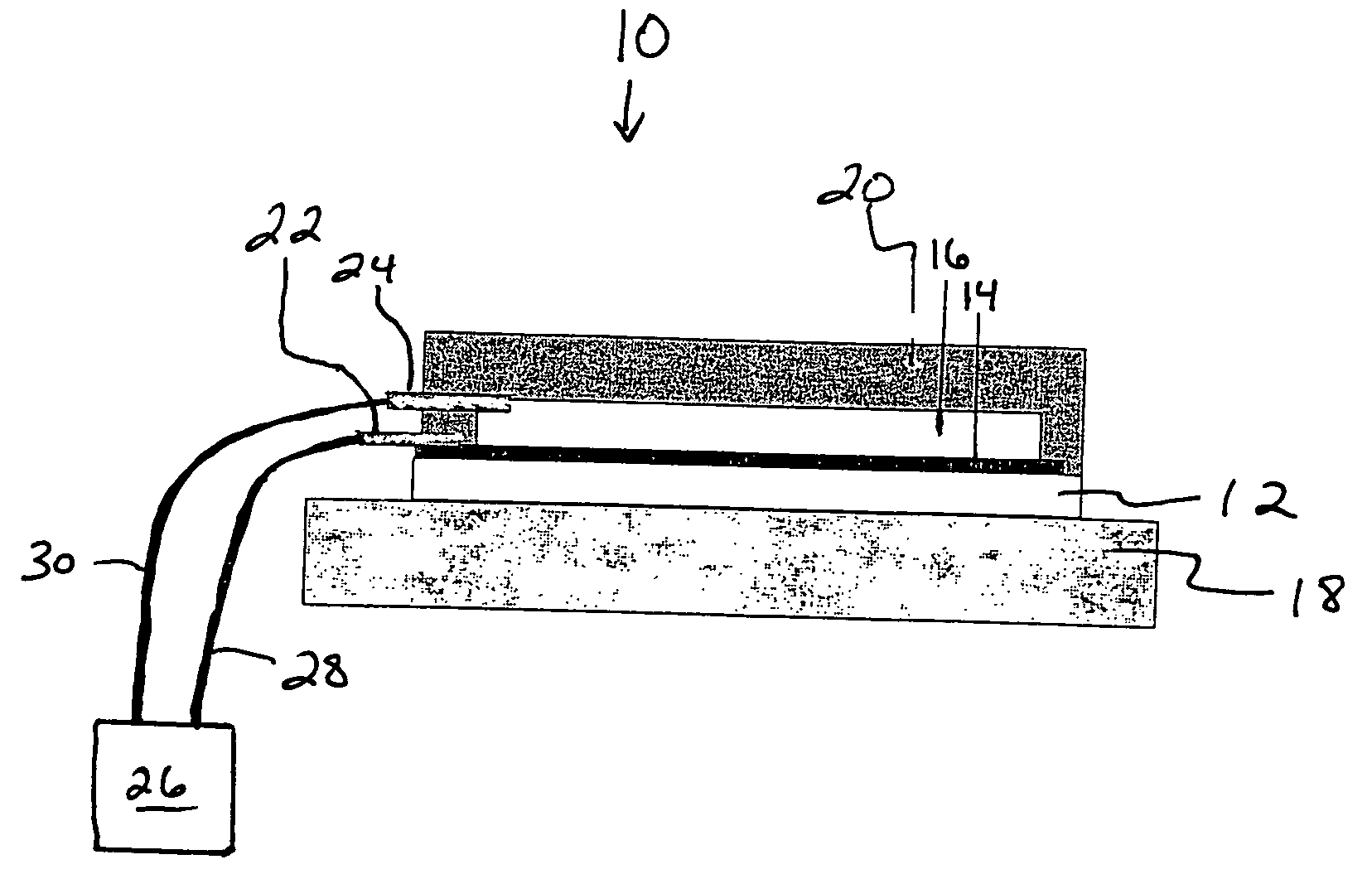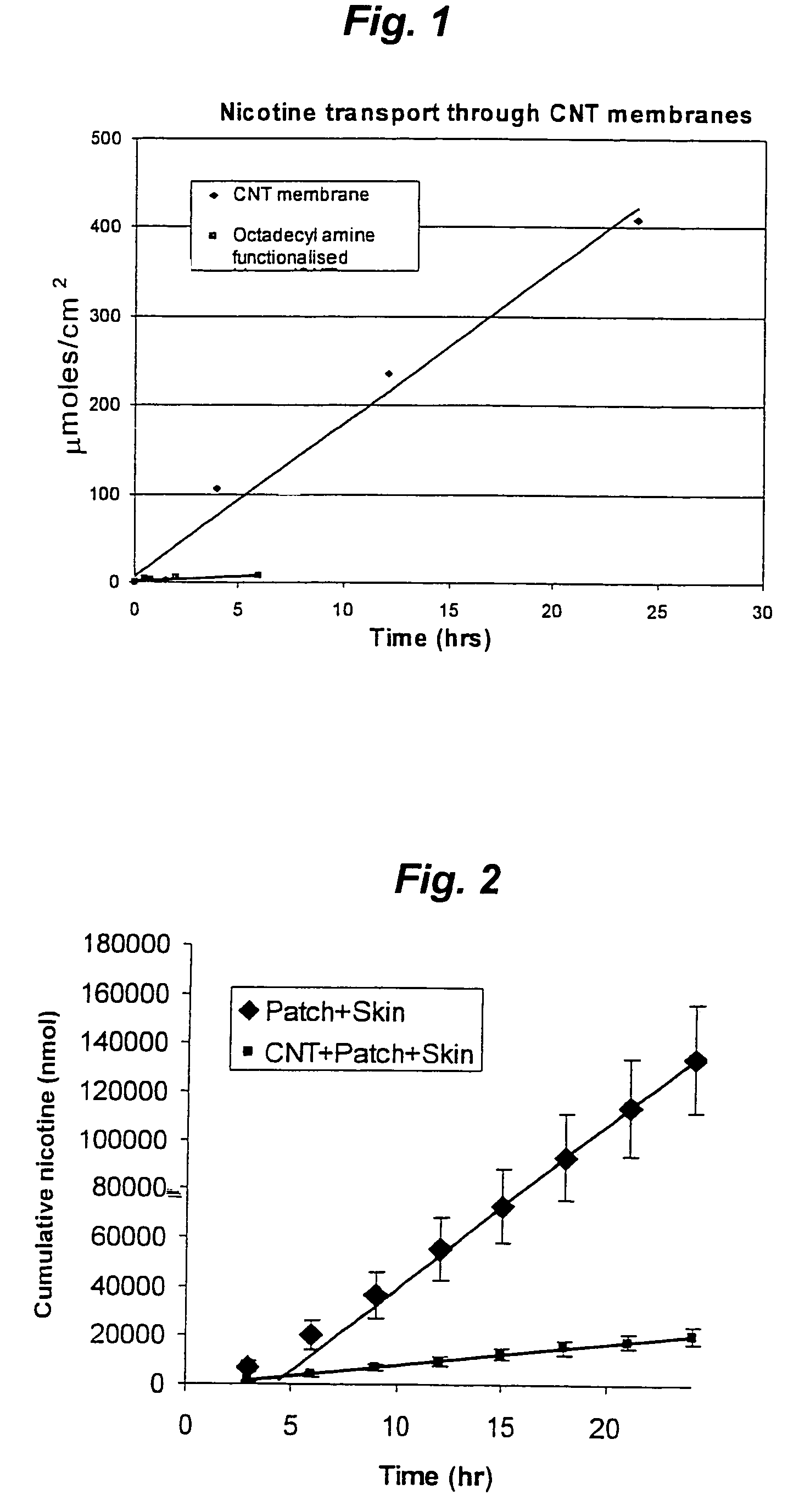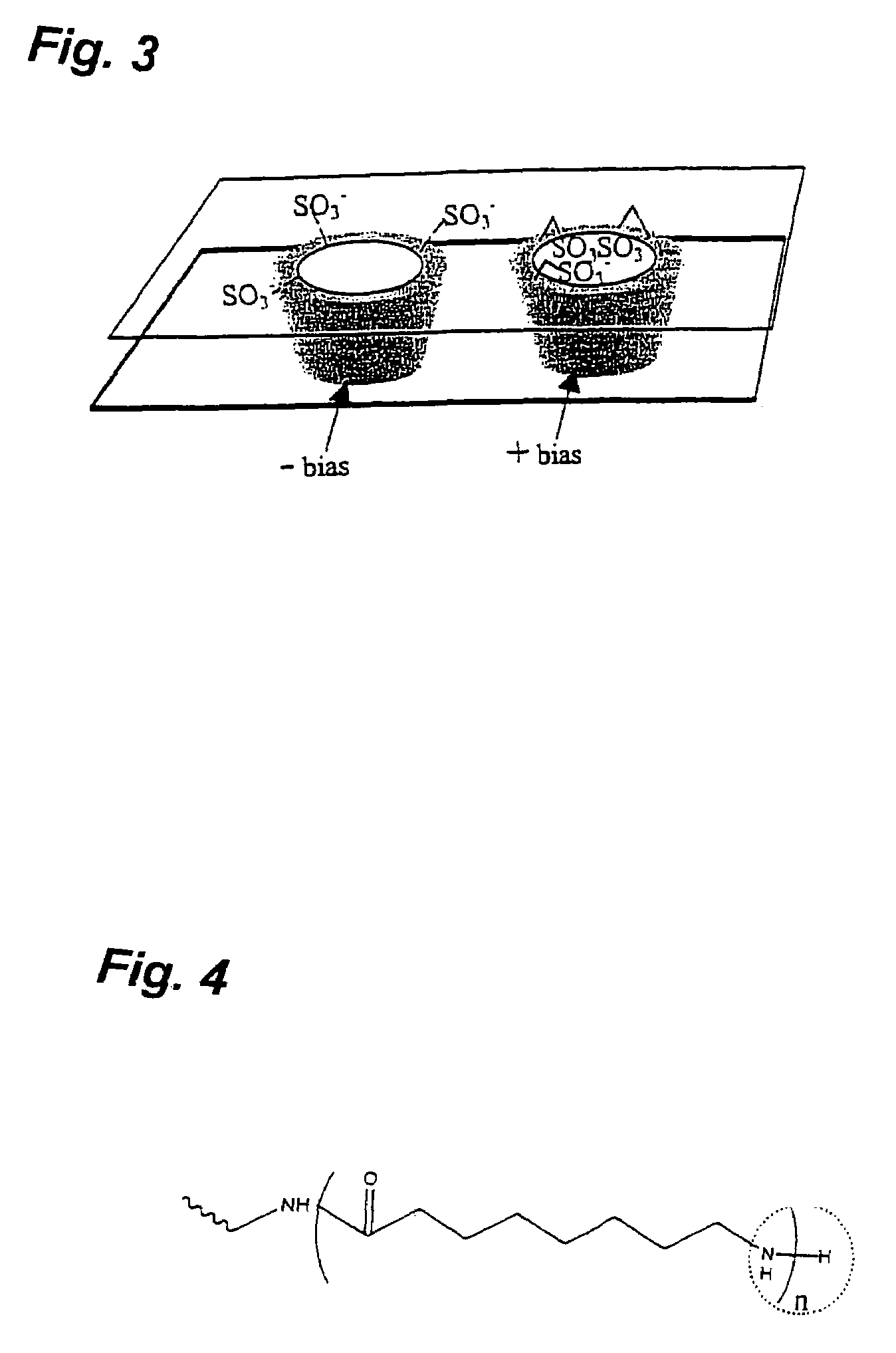Delivery system for a composition
a delivery system and composition technology, applied in the field of devices and methods for cutaneous delivery of compositions, can solve the problems of inability to easily adapt the current transdermal patch technology to such dosing regimens, the use of clonidine during opiate withdrawal therapy often requires an extremely complex dosing regimen, and the ineffectiveness of clonidine use during withdrawal therapy, etc., to achieve the effect of shortening the plurality of nanotubules
- Summary
- Abstract
- Description
- Claims
- Application Information
AI Technical Summary
Benefits of technology
Problems solved by technology
Method used
Image
Examples
example 1
[0027]Ordered nanoporous membranes were prepared substantially as described in U.S. patent application Ser. No. 11 / 128,443, filed on May 13, 2004. Aligned carbon nanotubes (CNTs) were grown in situ using substantially the methods described in R. Andrews et al., Continuous production of aligned carbon nanotubes: a step closer to commercial realization, Chem. Phys. Lett. (1999) 303, 467-474, on quartz substrate using a ferrocene-xylene-argon-hydrogen feed in a chemical vapor deposition process. A 50 weight-percent solution of polystyrene (PS) and toluene was spin-coated over the surface to impregnate the CNT array. The film was dried in vacuum for 4 days, and hydrofluoric acid was then used to remove the CNT-PS composite from the quartz substrate, to produce a freestanding composite film of 5 to 10 μm thickness.
[0028]A thin layer of excess polymer from the top surface was then removed to open the CNT tips and form the pores of a membrane structure. This was accomplished with H2O plasm...
example 2
[0039]Consideration was given to supplemental membranes for use as components of cutaneous delivery systems in combination with the ordered nanoporous membranes of the present invention. Potentially suitable polymer films and pressure sensitive adhesives were evaluated to define polymer / adhesive combinations providing the least diffusional resistance. Four commercially-available polymer membranes and three pressure sensitive adhesives were considered. The four membranes evaluated were: (1) a copolyester membrane (MEDIFILM® 390; Mylan Technologies, Inc., St. Albans, VT); (2) a polyurethane membrane (MEDIFILM® 437); (3) an ethyl vinyl acetate membrane (MEDIFILM® 500); and (4) a polyether block amide membrane (MEDIFILM® 840). The adhesives evaluated were: (1) an acrylic pressure sensitive adhesive having no functional groups to prevent chemical interaction of drugs with adhesive polymer (DURO-TAK® 87-900A, National Starch & Chemical Co., Bridgewater, N.J.); a silicone pressure sensitiv...
example 3
[0044]Next, a delivery system adaptable for cutaneous delivery was evaluated, comprising the ordered nanoporous membrane of Example 1 as the rate-controlling component and the polymer / adhesive supplemental membrane of Example 2 as a protective mechanism to reduce risk of biofouling of the ordered nanoporous membrane. A non-functionalized CNT membrane prepared substantially as described in Example 1 was adhered to MEDIFILM® 840 using DURO-TAK® 87-900A. The composite membrane was placed into a flow-through diffusion cell and evaluated for nicotine transport as described in Example 2. Polymer / skin patches (without CNT membranes) were used as controls.
[0045]As shown in FIG. 2, the nicotine flux from the CNT membrane / polymer membrane / skin patches was 8-fold less than nicotine flux from the polymer membrane / skin patches. A good linear steady-state diffusion profile was obtained with the CNT membrane / polymer membrane / skin patches over a 24 hr period, and the membrane was intact and undamag...
PUM
| Property | Measurement | Unit |
|---|---|---|
| thickness | aaaaa | aaaaa |
| pH | aaaaa | aaaaa |
| pH | aaaaa | aaaaa |
Abstract
Description
Claims
Application Information
 Login to View More
Login to View More - R&D
- Intellectual Property
- Life Sciences
- Materials
- Tech Scout
- Unparalleled Data Quality
- Higher Quality Content
- 60% Fewer Hallucinations
Browse by: Latest US Patents, China's latest patents, Technical Efficacy Thesaurus, Application Domain, Technology Topic, Popular Technical Reports.
© 2025 PatSnap. All rights reserved.Legal|Privacy policy|Modern Slavery Act Transparency Statement|Sitemap|About US| Contact US: help@patsnap.com



